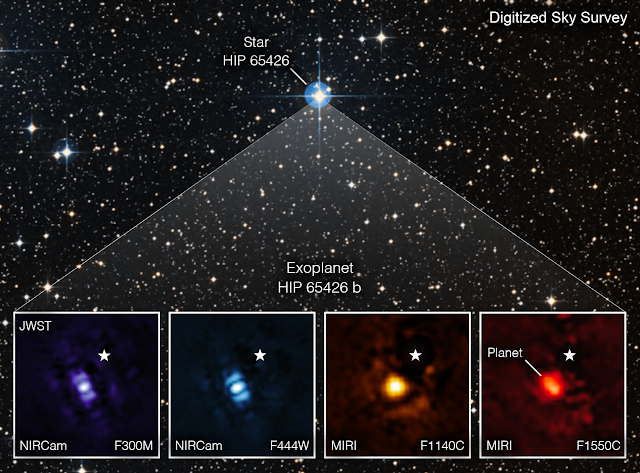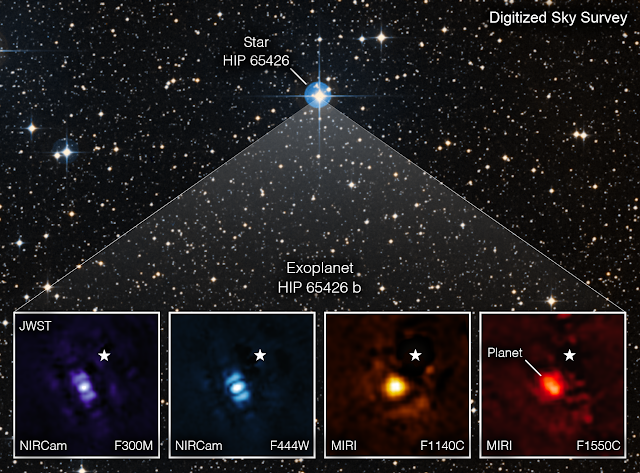James Webb Space Telescope Takes First-Ever Direct Image of Exoplanet Outside Our Solar System
Using a range of instruments, the James Webb Space Telescope has captured multiple images of the exoplanet HIP 65426 b, a gas giant located approximately 385 light years from Earth, with a mass six to twelve times that of Jupiter. The findings are currently being investigated and have not yet been peer-reviewed or published in a scientific journal. However, NASA announced them in a blog post on Thursday. Sasha Hinkley, an associate professor of physics and astronomy at the University of Exeter, who is the principal scientist in an international team studying exoplanets, said that this is a significant moment for both Webb and astronomy.

While HIP 65426 b was discovered in 2017 by the European Southern Observatory’s Very Large Telescope in Chile, it is difficult to observe exoplanets directly as their neighboring stars’ strong brightness can obscure the light from the exoplanet. However, Webb’s sensors have coronagraphs which help to reduce glare and make it easier to detect and focus on an exoplanet. Additionally, Webb’s images provide a more detailed view of HIP 65426 b as it has access to more of the infrared spectrum, unlike ground-based observatories which have limited access due to Earth’s atmosphere.
The images, which were captured with Webb’s Near-infrared camera (Nircam) and Mid-infrared instrument (Miri) using different filters, are just the beginning of a series of exoplanet observations and discoveries that scientists anticipate making with the new space observatory. Aarynn Carter, a postdoctoral researcher at the University of California, Santa Cruz, who analyzed the new Webb images of HIP 65426 b, said that what is most exciting is that they have only just begun and that there are many more images of exoplanets to come that will shape their overall understanding of their physics, chemistry, and formation.
Source:NASA
Do not forget to share your opinion with us to provide you with the best posts !




0 Comments